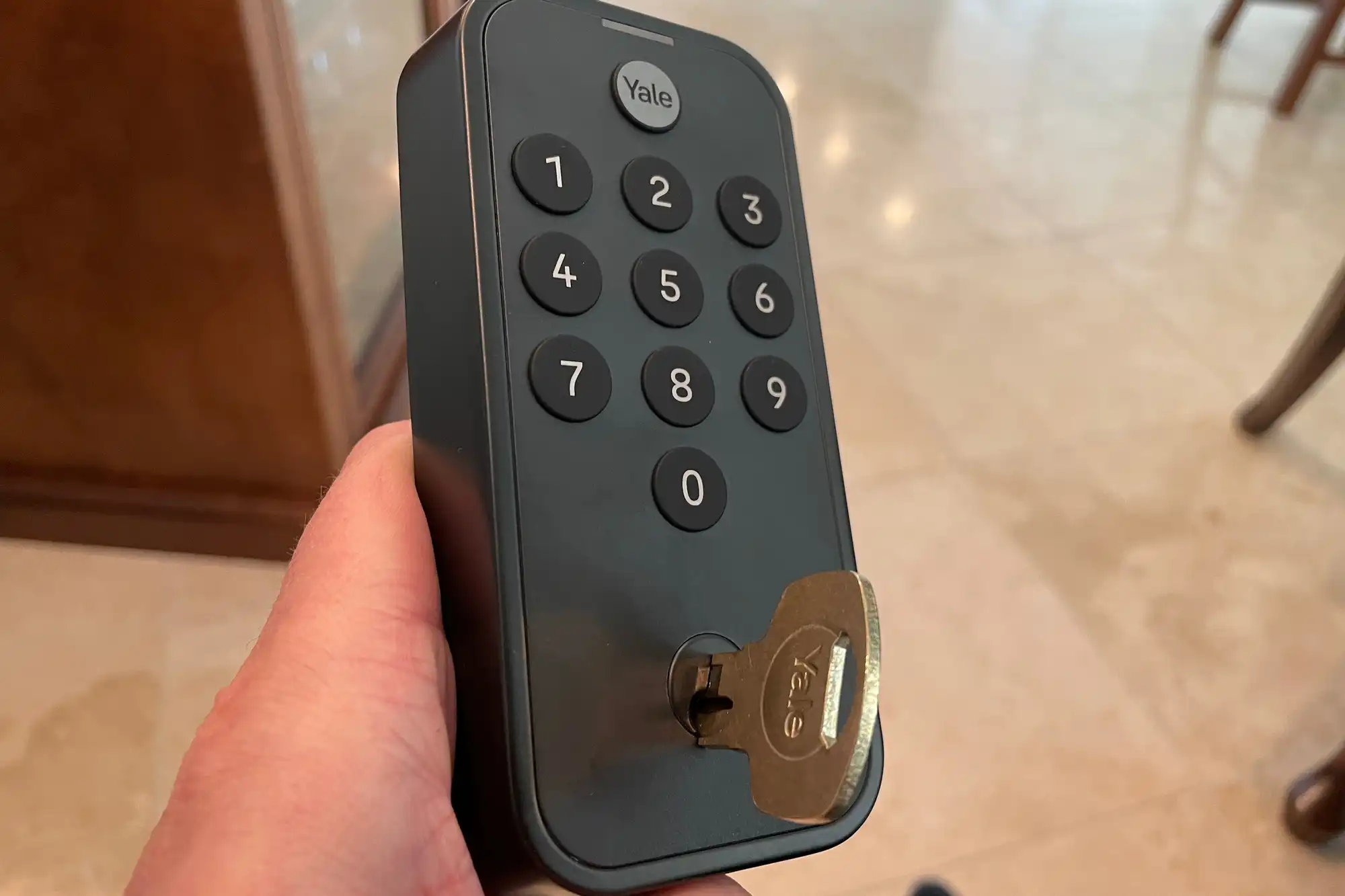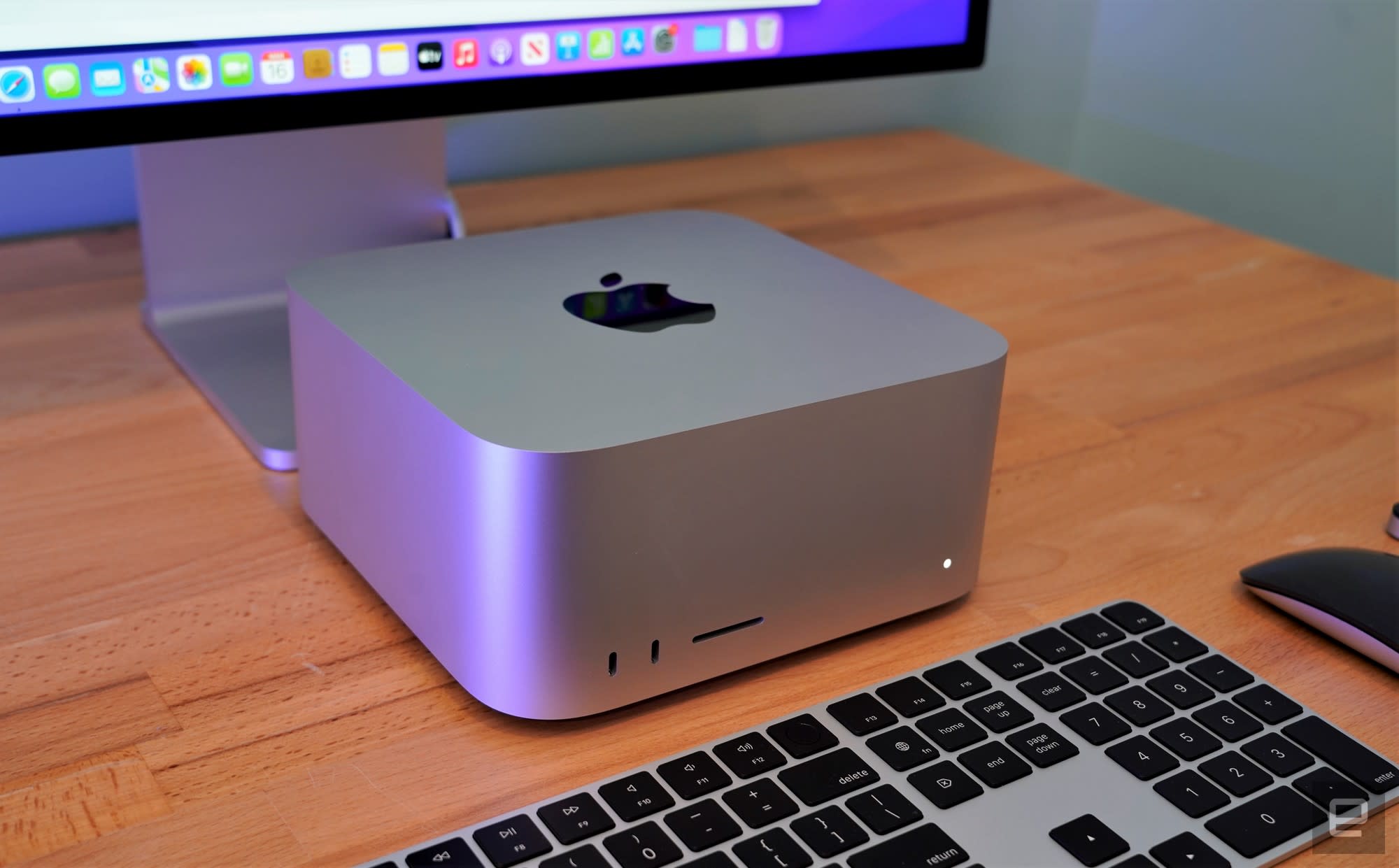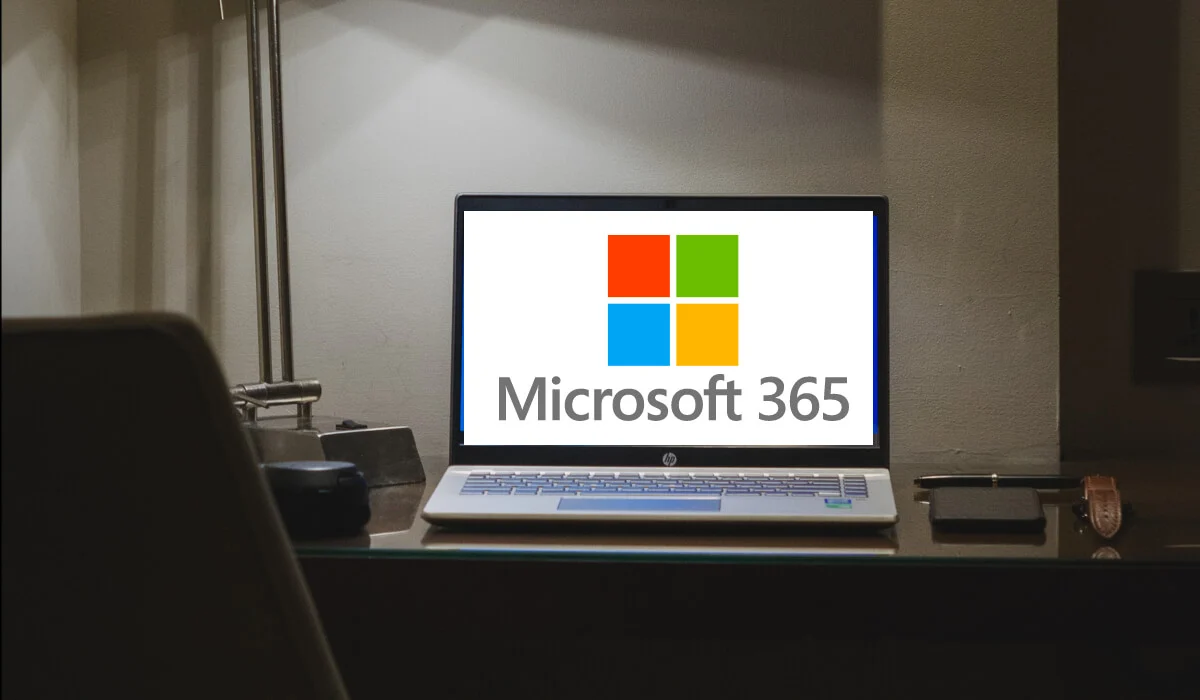Yale’s parade of high-tech locks continues with the release of the Yale Code (model YED210), a simple and straightforward lock, albeit one without any form of wireless connectivity.
The Yale Code couldn’t be simpler in both appearance and function. A demure exterior escutcheon includes a numeric keypad above a traditional, uncovered keyhole (as with other recent Yale locks with keyholes, only a single key is provided). A small LED appears above the keypad, which is mainly used to indicate when the keypad is active. The keypad buttons are rubbery, but they emit a satisfying click when depressed, making it obvious that they’ve been pushed. (They’re also amplified by a short beep when you push each one.)
The Yale Code gets the job done well, with smooth operation, simple management, and a distinct lack of bugginess

Yale
Installing and programming the Yale Code
The exterior escutcheon attaches via the traditional method to a plate inside the door. The two parts are held together with two bolts and connected with a single electronic cable fed through the bore hole. The cable is a little tricky to get connected due to the connector’s placement, but this is a minor complaint.
The lock’s interior escutcheon sits atop the interior mounting plate. It’s a tall monolith featuring only a thumbturn and a hatch beneath which four AA batteries (not included) must be inserted. Helpfully, the three screws that connect the interior escutcheon to the mounting plate are pre-installed and permanently attached to the unit, so you need only tighten them a bit. They can’t fall out and get lost, which is always an issue with these small screws when setting up other smart locks.
The lock is available in either a satin nickel or matte-black finish Yale calls “black suede.” I received the latter for review, though note that the satin nickel version only changes the finish on the outer edge of the exterior escutcheon; both locks have a black keypad and panel.

Christopher Null/Foundry
While the physical installation outlined above is simple and proceeded with no issues in my testing, a helpful printed manual guides you through the process every step of the way. In fact, it’s one of the best smart lock manuals I’ve seen to date. It’s clear, concise, and easy to follow.
Once physically installed, well, there’s not much more to report. There aren’t any wireless features on this lock, so all programming must be done via the keypad. Unlike many non-smart electronic locks, however, the Yale Code Keypad Lock mercifully keeps these programming options to a minimum. In fact, the only programming available is adding and deleting PIN codes.
Programming the Yale Code
The lock supports up to 20 PINs, each 4 to 8 digits in length, and adding and removing them is a simple affair that, again, the manual guides you through with ease. All PINs provide 24/7 access, and there’s no way to time- or date-restrict a PIN. You can’t create one-time-use PINs, either.
All other configuration options—and there are only a few—are achieved through a trio of switches that can be found beneath the battery hatch. The three switches are used to 1) configure the door for right-hand or left-hand opening, a setting you’ll need to make exactly once, 2) turn the audio/beeps from the keypad on or off, and 3) turn auto-locking on or off.

Christopher Null/Foundry
The auto-lock feature, when active, is set to 30 seconds and can’t be changed. The feature worked well in my testing whether I opened the lock with a PIN, the key, or by turning the interior thumbturn. One final feature on the lock is an invalid code lockout, which disables the keypad for 60 seconds after five invalid entries. This is turned on by default and can’t be disabled.
The only complaint I might raise with the product is that to activate the keypad and ready it for entering your PIN, you must first press the Yale button, which causes the keypad to illuminate. It’s not an intuitive way to get things going, but if you start pressing buttons without pressing the Yale button, nothing will happen.
This might confuse some novice users, who might think the lock is malfunctioning. Once the PIN is entered, the Yale button must then be pressed again to accept the completed entry. While this is standard, the use of a button that says Yale instead of a picture of a lock might also confuse people unfamiliar with the hardware.
Should you buy a Yale Code deadbolt?
The lack of smart features limits the extendibility of the lock since it can’t be remotely managed or integrated with any other smart home devices. But for a basic electronic lock it gets the job done well, with smooth operation, simple management, and a distinct lack of bugginess.




